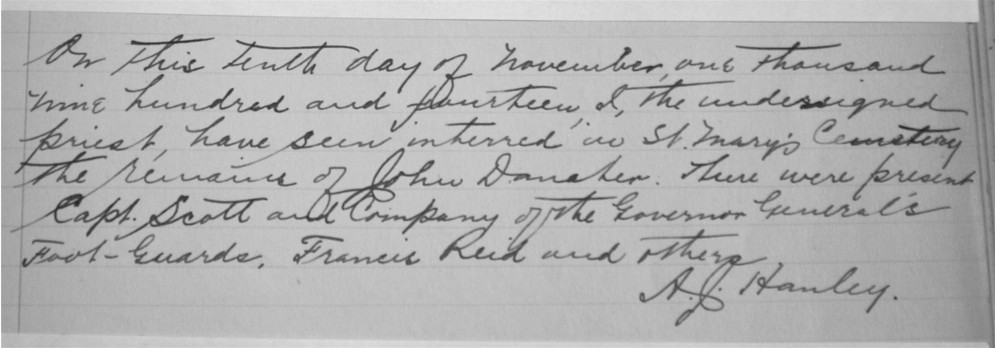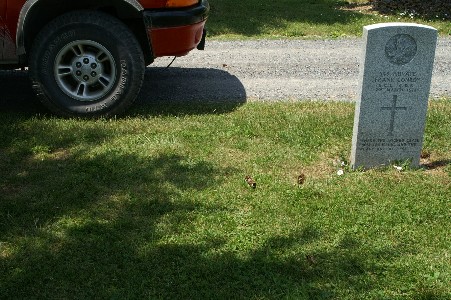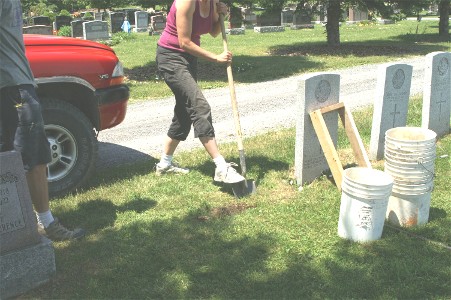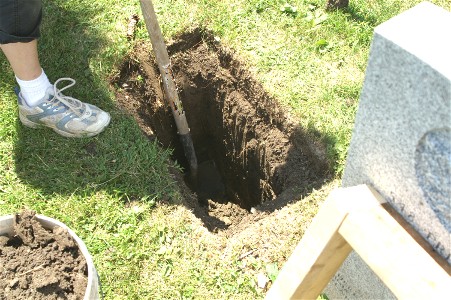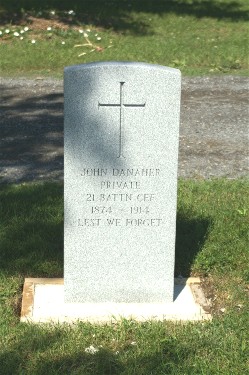|
Pte John Danaher "G" Company, 21st Battalion |
What follows is a sad story of a soldier who wanted to fight for his country, but drowned in Lake Ontario before he had that chance. Newspaper accounts of the event are very confusing. The Kingston Daily British Whig reported the drowning as a suicide, but the evidence eventually proved it to be an accident. Another confusing point was that the newspapers reported different names for the soldier, but none of them got it right. Tracking this story down and trying to find a grave for this soldier proved to be very difficult because of this. As noted in the articles below, it was reported as suicide in one paper, an accident in another. He was reported to be buried in St Mary's Cemetery in one article, as well as being buried in Cataraqui Cemetery in another. It was also reported in the newspaper accounts that he had been rejected for medical reasons and was to be returned to Ottawa. There is no evidence of that in his file. The real difficulty came in that even though there were 3 different names used in the following newspaper stories, none of them were correct. I made several attempts to locate the grave here in Kingston under all 3 names, but to no avail. At the end of a 2 year hunt, the office manager at St Mary's Cemetery, Bernadette Freeburn, contacted St Mary's Cathedral Archives and the problem was ultimately solved there. Below is a copy of their entry for November 10, 1914. The name was John Danaher. We now have the correct name and the cemetery he is buried in, but not the actual grave. Over the years, St Mary's Cemetery records have been lost and the grave location is unknown, and a grave marker was never put in place. There are several unmarked graves in the military section that have no names recorded. It is assumed he is in one of those graves. Once the name was known, his service record was located at Library and Archives Canada. There were no Attestation Papers in the file, as he had not been sworn in. It would also appear that no medical examination had taken place prior to his death, as no report was in the file. Other than official letters between Militia Headquarters Kingston and Ottawa, the only item of real interest is the proceedings of the Court of Enquiry, which is transcribed below. I should reiterate that many of the "facts" in the newspaper articles below are in error. He did not commit suicide, he was not rejected for medical reasons, and there is no evidence that he was being rejected and returned to Ottawa. It is a classic case of the media not getting it right. I would like to thank Bernadette Freeburn of St Mary's Cemetery for her time and effort in helping to solve this puzzle.
|
|
|
|
Court of Enquiry Held at the Armouries, Kingston Ontario President
Members
1st Evidence Acting Colour Sergeant John Fee, “G” Company, 21st Battalion CEF states: I am Acting Colour Sergeant of “G” Company, 21st Battalion, Canadian Expeditionary Force, on the 7th inst about 12 o’clock noon, I was speaking to the late private J Danaher. He was lying in his bunk in the Cereal Building. He had been discharged that morning from custody after being confined to Barracks for drunkenness. I asked him how he was feeling. He said he was feeling very good, and so he joined me and we went down to lunch together. I lost track of him at lunch. After lunch I saw him again standing at the entrance door of the building, which was the last time I saw him alive. He appeared to be in a sane and rational state of mind. (signed by J Fee, Col Sergt) 2nd Evidence Provisional Corporal Murphy, 21st Battalion, “G” Company, CEF, states: I knew of Danaher, didn’t know him personally. I saw Danaher at 1.30 pm on Saturday 7th November. I helped to take the body out of the water. It was the body of John Danaher dressed in Civilian Clothes. (Signed by James Peter Murphy, Corporal) 3rd Evidence Captain Scott, “G” Company, 21st Battalion CEF, states: I had Danaher parade before me the morning he was drowned. He was perfectly sober and in a good frame of mind. He said he was anxious to go to the front and to make a good soldier. I arrived at the Cereal Building shortly after noon and I was told a man had fallen into the water off the dock about half an hour before. When he was brought to the surface by means of grappling irons shortly after my arrival I recognized him as Private Danaher. I questioned all bystanders, but was unable to find any one who had seen him fall into the water. Danaher had been passed by the Doctor as fit, but had not been attested. (signed by RTM Scott, Capt., 21st Batt. CEF)
The document is recorded as being forwarded to the Acting Adjutant General of the 3rd Division and “Recommended”. It is signed by Lieut Col WS Hughes on December 4, 1914 and stamped “Dept MILITIA & DEFENCE, HQ CANADA” Dec 6, 1914
|
|
The following newspaper stories appeared between November 9 and November 12, 1914.
|
|
Kingston
Daily Standard, November 9, 1914 Drowned Off Cereal Wharf Saturday Afternoon
The drowning took place shortly before two-o’clock. The unfortunate man was seen going on to the dock
by a number of civilians but he was not seen falling into the water. Shortly after he had gone to the end of the dock
the sound of a heavy splash pierced the rather noisy atmosphere and in a few seconds there
were many soldiers on the end of the dock.
The man was seen struggling in the water and some ropes and planks were thrown out
to him but it appears that the heavy sea that was rolling and the coldness of the November
waters had benumbed the man’s senses and he either did not see the articles thrown or
he was physically unable to aid himself. Seeing
his condition, one of the officers of the GGFG, who is a champion swimmer, threw off his
coat and was about to jump into the water when he was stopped by many of the men who saw
that the attempt to recover the man, who by this time had gone to the bottom, would be
foolhardy. The strong wind that was blowing
towards the city made the water in the vicinity of the elevator a seething caldron and it
was next to impossible for even a strong swimmer to exist in the heavy and cold waves.
Hundreds of pairs of anxious eyes searched the waters below them in an effort to discover
at least the outlines of the man should he rise, but they were not to see their comrade,
as he had sunk for the last time and his battles were over. The wind was blowing at
a terrific rate and it was with much difficulty that the men, civilian and soldier, kept
themselves on their feet. When it was seen that the recruit would rise no more a
heavy sigh went up.
A call was sent to the Police and SS Corbett’s ambulance and they arrived on the
scene with dispatch. Grappling irons were procured, and the gruesome task of
searching for the remains was commenced. In about an hour the body was brought to
the surface and was at once viewed by coroner Gardiner, who deemed that the death was
accidental and that an inquest was unnecessary. When the man
was at the bottom of the river an attempt was made by officers and soldiers in the
vicinity to establish his identity, as some had said that he was a recruit but he did not
have a uniform on. After some inquiries it was found that no one appeared to miss a
friend or comrade. Finally a big soldier from Ottawa stepped on to the dock and
seeing a cap lying there asked where it came from. He was informed that it was that
of the drowned man. On examining it he conveyed the sad intelligence that it belong
to John Banaher.
In the pockets of the deceased were found discharge papers from the United States army and
a sum of money amounting to $76.05. His comrades knew very little of him except that
he had enlisted at Ottawa and that he had said that he had relatives in Ireland. He
was about forty years of age and was of heavy build and at Ottawa had passed a strict
medical examination.
The news was telegraphed to Lt-Col W.S. Hughes, who is making inquiries in Ottawa as to
the friends of the deceased. Military
Funeral
The sad death of Pte Banaher, who was drowned on Saturday afternoon, has caused widespread sorrow throughout the entire battalion. Inquiries by the military authorities show that the deceased soldier’s nearest relatives are in Ireland. A quiet military funeral will be held tomorrow morning.
|
